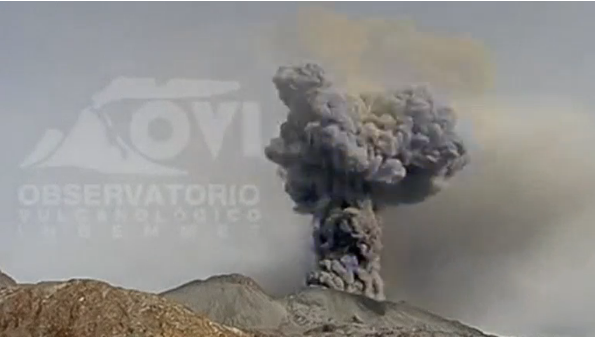
AREQUIPA, Peru (Reuters) — Peru’s Sabancaya volcano rumbled back to life on Monday (December 26), spewing ash and smoke some 3,500 meters (11,500 feet) into the sky, in the latest of a series of explosions.
Local authorities warned surrounding communities could be affected by ash from the volcano which came to life at 8:24 a.m. (1324 GMT) Monday morning.
The volcano had similar explosions on December 16 as well, as a handful leading up to Christmas day (December 25), in addition to a series of daily eruptions throughout much of November.
The 20,000-foot (6,000-metre) Sabancaya, which means “tongue of fire” in Quechua, has been seismically active for 18 years. During that time, it has seen periods with eruptions of varying intensities.
Sabancaya sits atop the South America tectonic plate, which forces magma to the surface when it clashes with the neighbouring Nazca plate.
Sabancaya was dormant for 200 years before erupting several times in the 1980s and 1990s.
Its current activity is coinciding with eruptions at the Ubinas volcano, also located in southern Peru, some 100 kilometres (60 miles) away.
The twin events mark the first time in recorded history Peru is host to two volcanoes seeing continuous eruptions.







